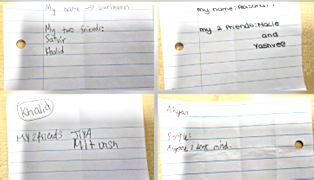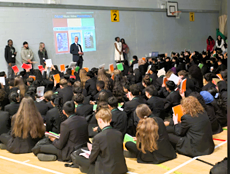Student Voice in the Classroom
Student voice in the classroom refers to actively incorporating students' perspectives, ideas, and feedback into the learning environment. It's about empowering students to participate in decisions that affect them and fostering a sense of ownership and engagement in their education. When students feel their voices are heard and valued, they become more active learners and contributors to the classroom community.
Benefits of Student Voice:
- Increased Engagement:
- Improved Learning Outcomes:
- Positive Classroom Culture:
- Enhanced Critical Thinking:
- Development of Leadership Skills:
Examples of Student Voice in the Classroom:
Students can provide feedback on lesson content, teaching styles, and activities to help teachers tailor their approach.
Students can contribute to the development of the curriculum, sharing their interests and suggesting relevant topics.
Students can participate in establishing classroom rules and expectations, promoting a sense of ownership and responsibility.
Student Voice can extend beyond the classroom to influence school policies, events, and overall school culture.
Examples of how staff have used Student Voice at GHS:
Seating Plans:
I used Student Voice by allowing my Year 9s to ‘choose’ where they sit.
For context, this is a class who have worked together as a whole, and relationships are positive between both students and me. They asked if they could choose their next seating plan, so I agreed to see what they came up with. They were all given a small piece of paper, were asked to write their name and two people that they would like to sit with. They had to think about whether sitting with a friend was going to be the best choice or sitting with someone they knew they worked well with:

Interestingly, there was a combination of letting me choose, them choosing their friends and then who they worked well with.
Now, this does not mean it was free for all. I looked at who they chose and decided if this was the right fit for all students. The class knew that this was a tricky task, so they were happy to sit at the table of six with their choice.
They understood that this was ultimately my decision, but felt they had a say. So far, they have worked really well, and this has been an incentive for them to continue to work hard.
Media Awards:
Adam Bush used RAG in assembly to vote for the media awards. All students across the school used their planners to vote for who they thought should win.

Assessments
Rola Harb has used Student Voice regarding assessments. We often give students exam papers; there are topics they have seen and some ‘unseen’ topics. Some students commented that they wanted to be tested on only topics that they were taught - this was an incentive for them to revise. As a result, Rola has worked extensively in making differentiated exam papers for Year 9s. The results have been excellent, and it is really easy for teachers, students and parents to identify who did not revise and which topics need to be revisited.
If you have used Student Voice in lessons or around the school, please share your ideas with me.
Amandeep Phull